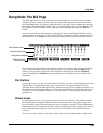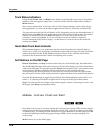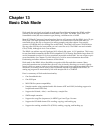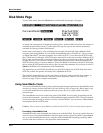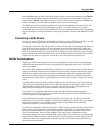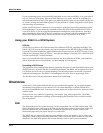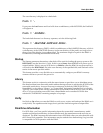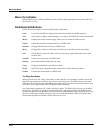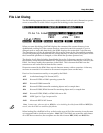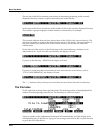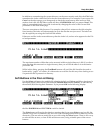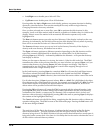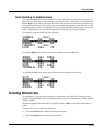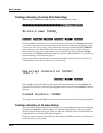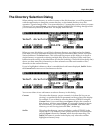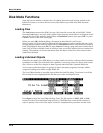
Basic Disk Mode
File List Dialog
13-7
File List Dialog
The file list dialog appears when you select a disk function (such as Load or Rename) to operate
on one or more files on a disk. Here is a typical file list dialog, for the Load function:
Dir:\||||||||||||Sel:0/3|||||Index:|||1|
||||||||||||||||||||||||||||||||||||||||
||||||||||||||||||||||||||||||||||||||||
||||File|to|load:BASSOON||.K26|||3456K||
|||||||||||||||||MAY25||||||||(dir)|||||
|||||||||||||||||PERC|||||.K26||||101K||
|Total:3557K||||||||||||||||||||||||||||
Select||Root||Parent||Open|||OK|||Cancel
When you enter this dialog, the K2661 displays the contents of the current directory, in an
alphabetized scrolling list. If the current directory cannot be located (for example, if you’ve
changed cards or removable hard disks), the K2661 displays the current disk’s root directory.
The root directory will also be selected if the disk was just chosen by the CurrentDisk parameter
on the Disk-mode page (remember that the current directory is always set to the top level when
the CurrentDisk parameter is changed, or if the K2661 has just been powered on).
The display for all disks (including SmartMedia) shows the 3-character extension of all files in
the directory (except directories themselves). Extensions are created when the file is saved by the
K2661. You cannot modify the extensions on the K2661. This is because the K2661 uses the
extensions to tell it what kind of data the files contain.
Directories created by the K2661 have up to 8-character names, with no extension. A directory
can have an extension if it is created on an external computer (more on this later).
Here is a list of extensions used by or accepted by the K2661:
.AIF Audio Interchange File Format (AIFF)
.KOS Kurzweil K2500 or K2661 operating system file
.KRZ Kurzweil K2000 format file
.K25 Kurzweil K2500 format file containing objects and/or sample data
.K26 Kurzweil K2600/K2661 format file containing objects and/or sample data
.MAC Kurzweil K2500, K2600, or K2661 disk macro file
.MID MIDI Type 0 or Type 1 sequence file
.WAV Microsoft RIFF WAVE format
Note: In most cases, when we refer to .K26 files, we’re including the older-format .K25 and .KRZ files
as well, since the K2661 can read these file formats.
When loading files, the K2661 will try to find out the type of file if the extension is not the same
as is suggested above (with one exception: .MAC files). The K2661 can create files with almost
all of the above extensions; the exceptions are the older-format .KRZ, .K25, and .KOS files.



